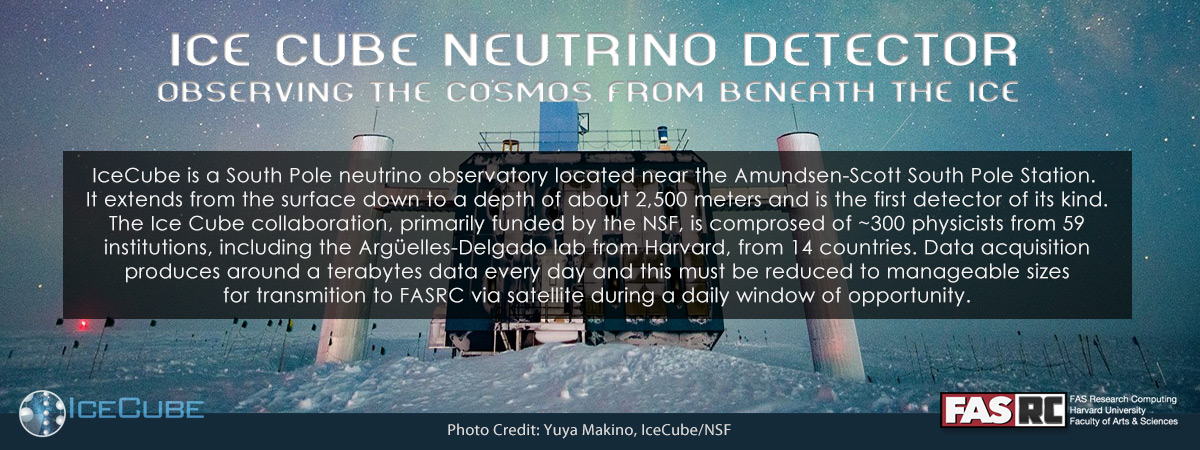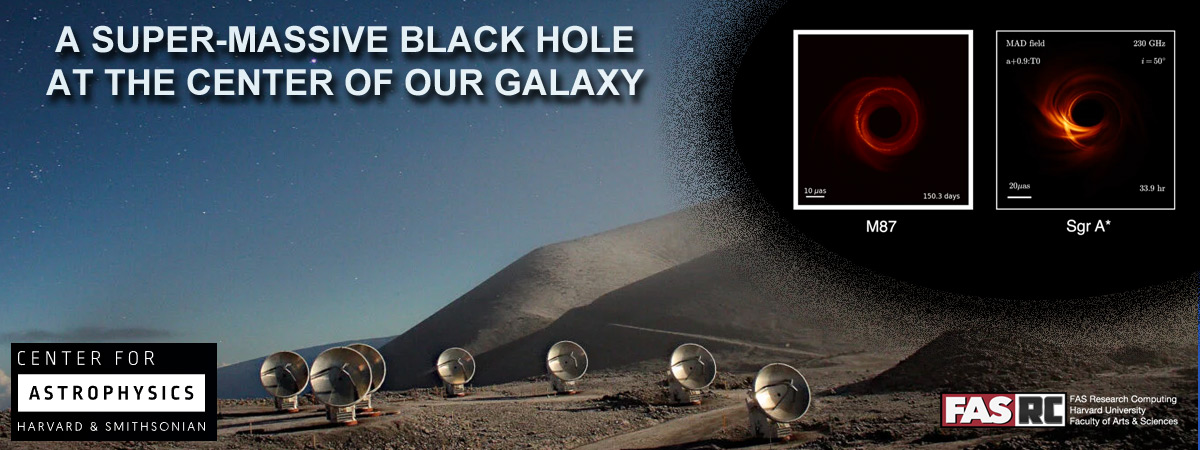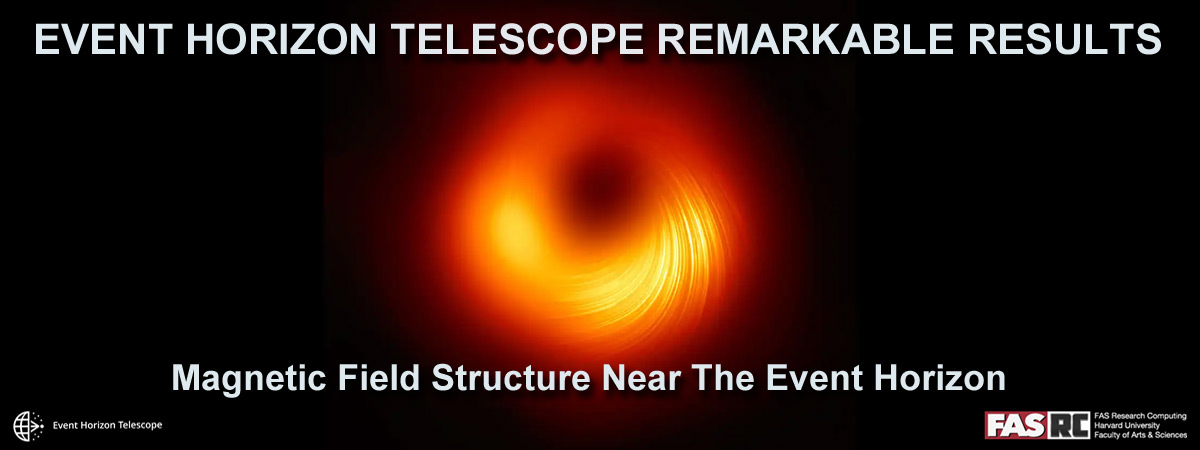
The Event Horizon Telescope Collaboration has published results showing how the project was able to map and create imagery of polarized emissions from material rotating within the magnetic field near the event horizon of the supermassive black hole in galaxy M87.
Scientists from Harvard's Center for Astrophysics and Black Hole Initiative used the FASRC cluster for several parts of this projects' results. Prof. Ramesh Narayan's group created the simulated polarized images of M87 from GRMHD snapshots, as well as the calculations for the Faraday rotation figures and other complex calculations.
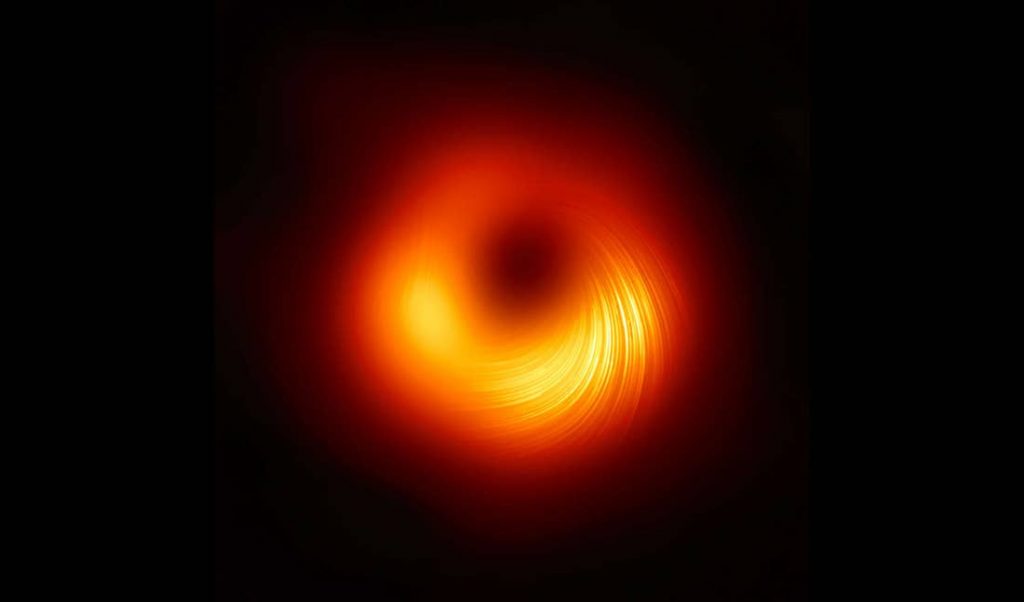
Simulated image using the polarized emissions. - EHT Collaboration
"Event Horizon Telescope (EHT) observations at 230 GHz have now imaged polarized emission around the supermassive black hole in M87 on event-horizon scales. This polarized synchrotron radiation probes the structure of magnetic fields and the plasma properties near the black hole. Here we compare the resolved polarization structure observed by the EHT, along with simultaneous unresolved observations with the Atacama Large Millimeter/submillimeter Array, to expectations from theoretical models..."
Abstract - The Event Horizon Telescope Collaboration et al 2021 ApJL 910 L13
You can find the full paper here: https://iopscience.iop.org/article/10.3847/2041-8213/abe4de
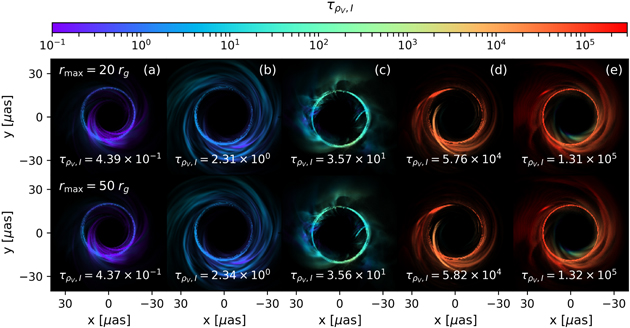
Intensity-weighted Faraday depths visualized with five example models... (Source)
Coverage in Popular Science Media
For those unfamiliar with the project and these new results, popular astronomy blogger Phil Plait recently covered it on his Bad Astronomy blog (where he covers 'good' astronomy as well). He also posted about EHT's earlier, and equally astounding, first images of the event horizon of a black hole. This new paper describes further results and new observations of that same black hole and the clever techniques used to produce these new images.
"Using the Event Horizon Telescope data they were able to map the polarized light from the material, the key to investigating the magnetic fields themselves."
"They measured the rate at which stuff is falling in as 0.0003–0.002 of the Sun's mass every year. That may not sound like much, but in fact it means that at the top of that range the black hole is consuming as much as two Jupiters worth of material every year."
And as to why these results have taken so long when previous results and papers were already available:
"Measuring the polarization of the light is an incredibly difficult and painstaking process, which is why these observations are being released only now; it took much longer to analyze the data than to make the image we saw two years ago. But the information stored in such data is worth the effort and the wait."
Plait's post is well worth a read whether you're an astronomer, astrophysicist, or just an enthusiastic follower of cosmological science.
Bad Astronomy article: Event Horizon Telescope Sees the Magnetic Engine Behind a Supermassive Black Hole's Immense Power

